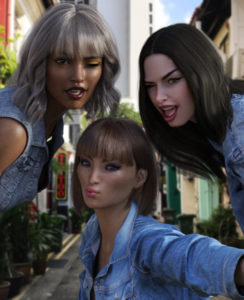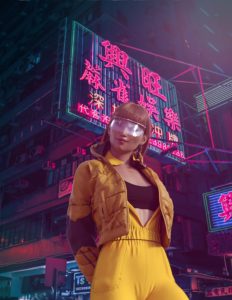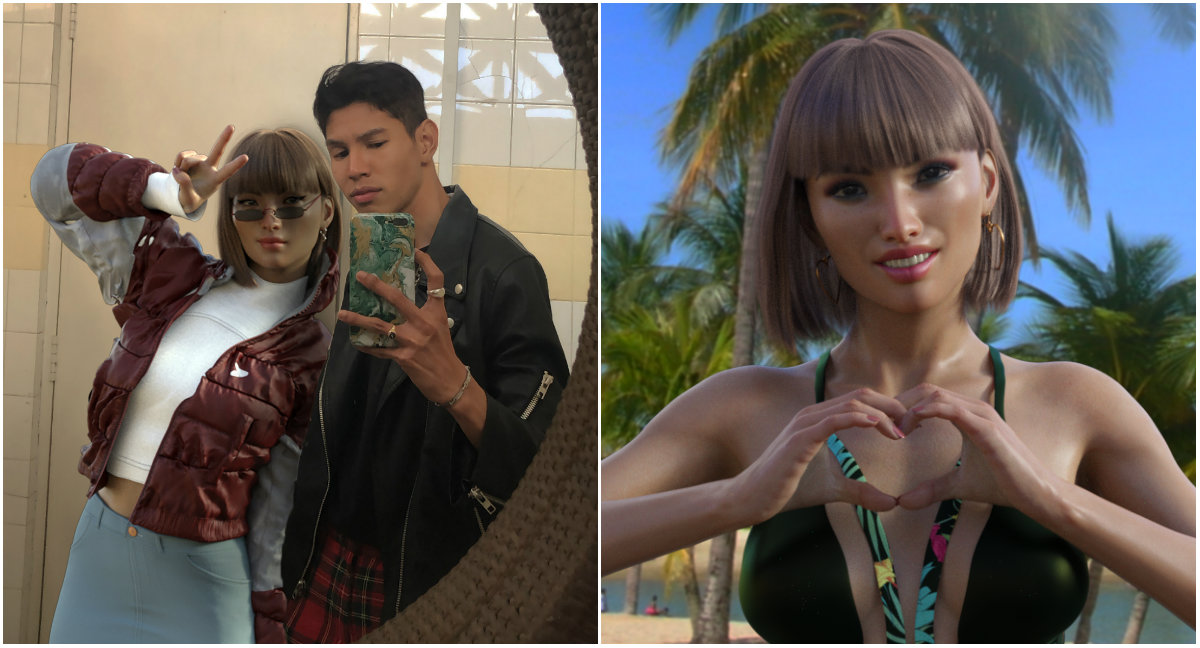Singapore’s newest computer-generated model will make her debut in the local fashion scene tomorrow.
The rise of virtual influencers worldwide has “birthed” AI personality Ava Gram, who is described as fashionable, gender fluid, and woke, by creator Reyme Husaini. The 27-year-old Lasalle College of the Arts senior chatted with Coconuts Singapore last week about what it took to create his flashy new invention, who is already gaining attention ahead of her fashion show debut.
“At first, it seemed like a school project but a lot of people are pushing for me to reveal more about Ava after I posted her on my personal instagram,” he said. Reyme first shared Ava with his Instagram followers in early May.
The public will get a better look tomorrow when Ava, or Artificial Virtual Android, goes live at a graduation show to be held virtually due to COVID-19.
The forever 22-year-old Ava is part of Reyme’s Fashion Media and Industries final project, which took just over a year to complete.
“There are brands that are thinking of collaborating, so I’m actually thinking of expanding even further than just a school project,” he said.
Beside fashion brands, Reyme said that Ava is open to collaborating with brands that are LGBT-inclusive or are linked to charitable causes.
“Ava is a fashion influencer and someone who not only wants to influence through fashion but to create conversations, be a voice for minority groups like migrant workers and the LGBTQ community,” the creator added. Ava will show support for the upcoming LGBT virtual rally, Pink Dot, on June 27.
He wants her to be an agent of tolerance.
“I would want to make her an advocate for social issues, meshing fashion with controversial issues like for example designing an entire pink outfit with words of support for the LGBTQ community,” Reyme said, adding that Ava is “gender fluid.”
“She looks female, but she can be customized to be someone different, she’s basically a blank canvas like a fashion chameleon,” he said. “Gender fluidity can also come from your characteristics, it doesn’t have to only be based on the outer appearance. You can be a tomboy at heart as well.”
For now, Ava has yet to have a voice or come to life in motion outside of one brief rendering.
Reyme said his personality is very different from that of Ava. The inspiration for her look and character came from his peers.
“She’s basically someone who is very cool and relatable, but she’s not a suck up, she’s living her best life,” Reyme added.
Reyme also aspires for Ava to be racially ambiguous, considering the lack of racial diversity he has noticed in Singapore’s fashion industry.
Earlier versions of Ava looked different from the final outcome. Reyme said they did not make the cut for his assignment because he was told that his virtual influencer needed to look more Asian. But the rejected versions remain alive on Instagram as Ava’s friends.

VIRTUAL VS. HUMAN INFLUENCERS
There are 20 virtual influencers around the world tracked by social analytics company Hype Auditor. They mostly appear to be female and as of last year were largely followed by Gen Z social media users (32%).
The most popular virtual influencer so far is America’s Lil Miquela with 2.3 million followers on Instagram. She’s appeared in Calvin Klein and Prada fashion campaigns. There is also the “Southeast Asian Virtual Girl” Maya who appeared in a Puma campaign.
The school project took Reyme just over a year to complete, including his research. Reyme said he was inspired to create a virtual influencer, which some call “brandfluencatars,” after noticing the rising popularity of such digital characters.
“There has been a surge in virtual influencers and it was pretty popular at the point of time so I went with the idea of creating my own virtual influencer, meshing both fashion and technology together,” Reyme said.
Creating social media content for virtual influencers takes more time as well. Just a single Instagram post takes him about a week to complete. This includes designing the clothes, poses, tweaking a real-life background and figuring out references as to who he wants her to emulate.

So, do we still need human Instagram influencers? Reyme thinks that virtual models can sometimes seem more relatable than humans.
“Human influencers are more focused on what kind of lifestyles they have and influence that she should have, and I felt that Ava should have her own voice and not be a sell out,” he said. “I wanted to create something that’s more raw, an influencer that influences you socially and culturally as well.”
In response to whether we still have a demand for influencer content, Reyme said: “Definitely, it’s just that influencers need to be more accepting and original in terms of their lifestyles and what they post on Instagram.”
Other stories you should check out:
Entire family of delivery riders bring cheer and love for Hari Raya
Make sustainable living ‘sexy’ at three-day virtual Conscious Festival
Hear great live plays read to you at home by real Singapore thespians
Grab says riders not banished from condo’s lifts after sign draws fury
Singaporeans can expect to eat out, hit the gym, shop by end-June





Reader Interactions